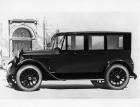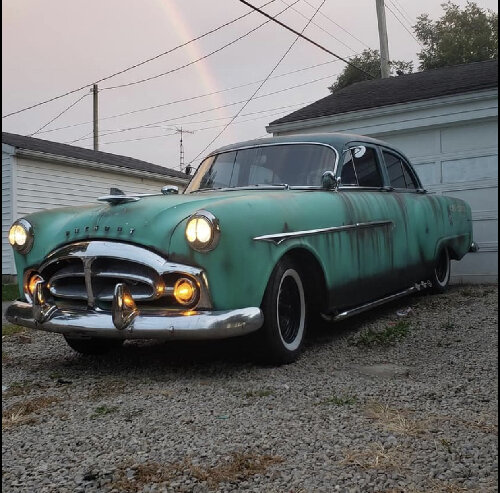|
Re: Bore/Stroke Ratios
|
||||
|---|---|---|---|---|
|
Home away from home
|
your "B/S ratios" are actually "S/B ratios" - these are undersquare designs with B/S < 1. Seems to me there is nothing too surprising - the bigger displacement, longer stroke Packard engines make more torque. Would a shorter stroke engine have tend to less cylinder wear - well yes, but provided rpm was equal, and metalurgy was equal, and lubrication was equal, etc.
Posted on: 2014/2/24 15:10
|
|||
|
||||
|
Re: Bore/Stroke Ratios
|
||||
|---|---|---|---|---|
|
Home away from home

|
The columns labeled "B/S ratio" should be "S/B ratio" since these are all under-square engines (stroke larger than bore), but otherwise an interesting data listing.
Most modern V-8s are over-square design with a few notable exceptions (Pontiac 455 for example). This has to do with superior breathing due to the overhead valve arrangement where a larger bore unshrouds the edges of the valves. In a flat head (L-head, F-head etc, the smaller bore is more appropriate and compatible. Longer stroke means more low RPM torque because of the greater lever arm of the crankshaft. An obviously important factor in moving a heavy vehicle from start, but clearly not as a good a "feature" today with the common high freeway speeds. Craig
Posted on: 2014/2/24 15:12
|
|||
|
Nuke them from orbit, it's the only way to be sure! Ellen Ripley "Aliens"
Time flies like an arrow. Frui |
||||
|
||||
|
Re: Bore/Stroke Ratios
|
||||
|---|---|---|---|---|
|
Home away from home
|
Steve, if I read your data correctly, the best Packard engine would be the 1953 9-main bearing, 327 cu. in., 180 h.p., 8:1 c.r. because of the s:b ratio and the number of main bearings. It would be the most powerful, have the lowest s:b ratio, and have the rigidity benefit of all those main bearings.
(o{}o)
Posted on: 2014/2/24 18:24
|
|||
|
We move toward
And make happen What occupies our mind... (W. Scherer) |
||||
|
||||
|
Re: Bore/Stroke Ratios
|
||||
|---|---|---|---|---|
|
Home away from home

|
Hi
Thanks for correcting me on the bore/stroke vs stroke/bore ratio, I should have realized since these are undersquare engines that would be the case. JW, that was my conclusion too, that a '53 Patrician 327 has all the most desirable qualities to make it the most durable, smooth and powerful of the '48-'53 straight eights. The '54 359 S/B ratio at 1.26:1, 8.7:1 cr still makes it the most desirable, though no one should turn their nose up at a '53 Patrician with that fine engine. Or any of the others, for that matter. Steve
Posted on: 2014/2/25 8:47
|
|||
|
||||








